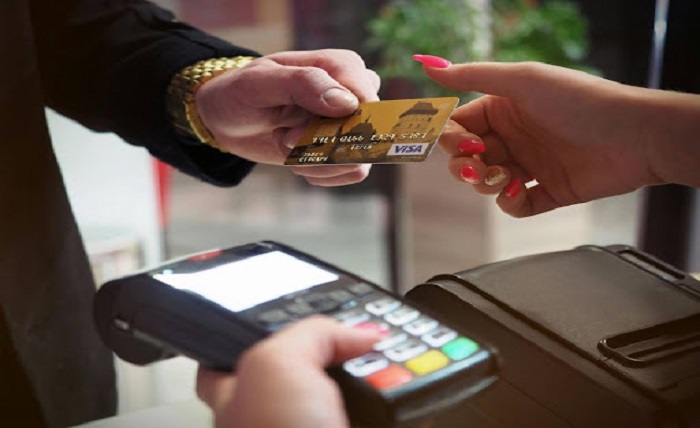The Real Cost of Impulse Buying—And How to Beat It

Ever walked into a store for one thing and walked out with five? Or maybe you opened a shopping app just to browse and suddenly found yourself checking out with a full cart. You’re not alone. Most of us have made impulse purchases without giving them much thought.
It feels small at the moment. A $15 candle, a $25 top on sale, a $10 kitchen gadget you’ll use once. But over time, these little splurges can quietly drain your budget, shift your priorities, and leave you wondering where your paycheck actually went.
Let’s talk about what impulse buying really costs—and how you can take back control.
Why We Buy Without Thinking
Impulse buying usually isn’t about the item itself. It’s about how we feel in the moment. Stress, boredom, loneliness, and even happiness can all push us toward making a quick purchase. Social media makes it worse. You scroll through your feed and see someone raving about a skincare product or a cute home decor piece—and without thinking, you click “add to cart.”
Marketers know exactly how to tap into this. Limited-time offers, “low stock” warnings, and discounts tied to countdown timers all create a sense of urgency. It becomes harder to pause and ask, “Do I really need this?”
This is where mindset work can help. Some people use affirmations for money to pause before spending. A simple phrase like “I spend with purpose” or “I choose what supports my future” can act as a mental reset. It’s not about magic words. It’s about shifting focus from instant gratification to long-term goals.
The Real Cost You Don’t See
It’s easy to brush off small purchases, but they add up fast. That $20 here and there? Multiply it by 10 or 15 impulse buys a month, and suddenly, you’re looking at hundreds of dollars that could’ve gone elsewhere.
Beyond the money itself, there’s the emotional weight. Regret kicks in when something you bought doesn’t add value to your life. Guilt follows when you realize you could’ve used that money to pay a bill or grow your savings. The stress of watching your bank balance shrink without clear reasons can wear you down.
Impulse spending can delay your bigger goals. That trip you’ve been meaning to take? The emergency fund you never seem to build? The credit card that never quite gets paid off? These things often get pushed back because the small stuff keeps winning.
How to Spot Impulse Spending Habits
To change a habit, you need to understand it. That starts with spotting your own patterns.
Ask yourself:
- Do you tend to shop when you’re emotional?
- Are late-night purchases a thing for you?
- Do you scroll through deals during lunch breaks?
- Do you use phrases like “I deserve this” or “It’s just one thing” often?
A simple way to check is to track your spending for a week. Write down everything you buy and note whether it was planned. You might be surprised at how much of your spending wasn’t intentional.
Another sign is how often you justify purchases you weren’t looking for in the first place. If you regularly find yourself buying because something is on sale—not because you need it—that’s a flag worth noticing.
Simple Fixes That Actually Work
You don’t need to be extreme or give up everything fun. A few small shifts can go a long way.
- Wait before buying:
A 24-hour pause rule helps. If you see something you like, save it and come back to it the next day. Often, the urge passes. - Unsubscribe from retail emails:
Out of sight, out of mind. If the offer never hits your inbox, you won’t be tempted. - Remove saved cards from apps:
Making it harder to check out gives you time to think. That little bit of friction can help you pause and reflect. - Use a shopping list:
Even for online browsing, make a list. If it’s not on the list, don’t buy it. - Set a monthly “fun spend” cap:
You don’t have to stop buying things you enjoy. Just set a limit for how much of your budget goes toward non-essentials. - Use cash envelopes or digital categories:
If you allocate $100 for dining out and $50 for hobbies, it’s easier to keep track and stay within bounds.
Build Better Habits Over Time
Like any change, beating impulse spending takes time. The goal isn’t to be perfect. It’s to become more aware and more consistent.
Try setting short-term goals that keep you motivated. For example, “I’ll save $100 this month to put toward my emergency fund.” Then, use that as a reason to say no to random purchases.
You can also try “habit stacking.” Link a money habit to something you already do. After you make coffee, check your spending for the week. Before you go to bed, review your wallet or banking app.
Check in with yourself often. Ask:
- Did I spend with intention today?
- Did I make any impulse purchases?
- If yes, why?
These check-ins are more helpful than setting strict rules and feeling bad when you break them. The idea is to understand your choices, not shame yourself for them.
When to Ask for Support
If impulse spending feels out of control, don’t be afraid to ask for help.
Sometimes, it’s deeper than just wanting a new outfit. You might be filling an emotional gap or using spending as a way to cope. In that case, talking to a therapist can help you figure out what’s driving the behavior.
If it’s more about structure and planning, a financial coach or advisor can work with you to create a budget and set realistic goals. Even talking to a trusted friend or family member can bring clarity.
There’s nothing weak about needing support. In fact, being honest with yourself is one of the strongest things you can do.
Impulse buying is something most of us deal with at some point. It’s not a sign of failure. It’s a habit—and like any habit, it can be changed.
You don’t have to cut out every treat or say no to everything fun. You just have to pause long enough to ask, “Is this helping me or holding me back?”
Even a few small changes—like tracking your triggers and setting limits can make a big difference. And over time, those changes can shift your mindset and move you closer to the financial peace you’ve been looking for.



